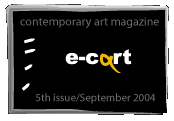


















Evolution
The objects that surround us represent a sort of slaves of man, they are humble and receptive, as they are used in our daily life and illustrated in all the Western art. They are the reflection of a total order, connected to a well-defined conception of settings and perspective, of substance and form. The objects are the reflection of a vision of the world in which each of them is conceived as a receptacle, as a bowl that includes symbolical meanings.
Among these, the unique, folk, exotic, ancient objects seem to contradict the existence within a functional account to have another role instead: that of witnesses, of memory, nostalgia or escaping. But they belong at the same time to modernity. However, if a modern object represents first and foremost functionality, an old object is history. The old object exists only to signify. Still, it is neither non-functional, nor purely decorative: it signifies time, more precisely the cultural clues of time. These historical connotations do not remain unnoticed. However beautiful it is, it stays eccentric. However authentic it is, it still keeps a false air. There has always been an attraction of the European people for old, for old furniture, for rustic, for the style object, for the folk object. This is because the old object represents to us a definitive, complete thing. The old object is "a family portrait", it is the capture of a previous existence, a process meaning a suppression of time.
Near the inherited objects we can find the new ones, which have a functional value and the kitsch objects which, imitating the authentic, bring it to the level of their owner. They are present because they imitate a lifestyle dreamed of and envied.
"Evolution" wants to be a presentation of the present universe of the object, an universe in which there coexists the old object, in which mythology one can find two aspects: the nostaly of origin and the obsession of authenticity, and the present object (which comes close to the kitsch object). Art proves to be a confrontation with temporality, the attraction towards the art object represents man's need of submersing into the temporal eternity. The certainty of the object's eternity makes that man depends on it and the need for acquisition, specific in the art's case, is the need of eternalizing the being of the person who does this acquisition. Objects, like art in general, suffer from a wide process of selection from the nature of society itself. Old cars, unique survivers from a series production, incorporate in them not only the whole specter of similar objects, the series, but the social universe itself that used to gravitate around them.
What this work wants to show is the confrontation between three epochs with a wide personal and autobiographical resonance, the 1920s, 1960s and 2000, the contemporary days. Between the three epochs there is a tension of ontological nature, the present being overwhelmed by the substantiality and the consistency of the past. If we find interest in the present only because it is concrete, on the contrary, the past, like pure platonic forms, persists, we can find it everywhere and nowhere, anytime and never. The three forms of existence presented here cannot coexist, they are excluding each other. Like different moments that cannot coexist in the same time, they also represent a dialectic unity of the world.
Ileana Mantoiu Baldovin and Gabriel Baldovin
 |
|
|
||||||||||||||||
 |
 |
 |
|
|||||||||||||||
 |
|
 |
|
|||||||||||||||
|
|
|
|||||||||||||||||
|
|
|
|||||||||||||||||
 |
|
|||||||||||||||||
 |
 |
 |
 |
 |
|
|||||||||||||
|
|
 |
|
|
|
|
|||||||||||||
|
|
|
|
||||||||||||||||
|
|
|
|||||||||||||||||
 |
|
|
||||||||||||||||
|
|
|
|||||||||||||||||
| |
|
|
||||||||||||||||
|
|
|
|||||||||||||||||
 |
|
|
||||||||||||||||
 |
|
|||||||||||||||||
|
|
 |
|
||||||||||||||||
 |
|
|||||||||||||||||
 |
|
|||||||||||||||||
|
|
|
|
|
|
|
|
|
|
|
|
|
|
|
|
|
|
|
|